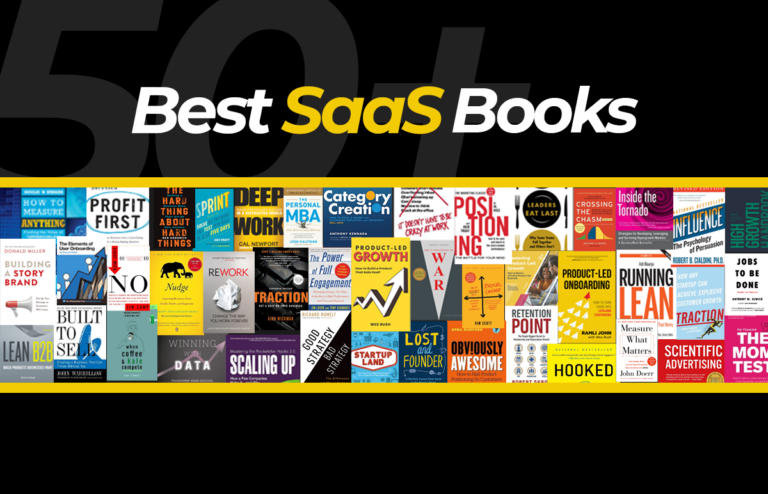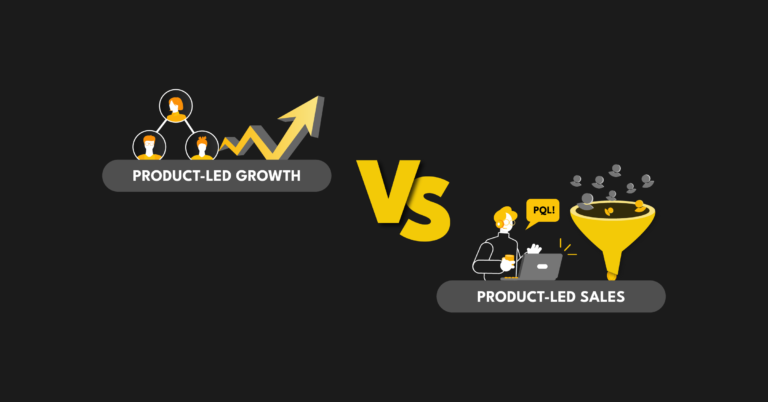The era of getting away with recklessly burning cash to acquire customers as a venture-backed SaaS company is over. Now, it's either you are financially disciplined and show ROI on spend, or you'll be left to die on the vine.
The current market downturn is that harsh, and many founders and Chief Marketing Officers (CMOs) believe shrinking their marketing budget is one of the best ways to survive it.
Maybe you're probably thinking (or have thought) in that direction.
But what if I told you there is a better way to save costs and improve your company's profitability during this downturn?
What's this better alternative, you ask?
Product-led marketing (PLM).
Not so sure what product-led marketing means or how to transition to it?
In this article, I'll explain how product-led marketing can help you see the full value of every dollar you spend on growth. I'll also show you how to transition successfully.
How Product-Led Marketing Improves Adoption and Retention at No Cost
Marketing is to SaaS growth what oxygen is to humans. This is why SaaS companies like yours are advised to spend up to 25% of their annual revenue on marketing to recover their customer acquisition cost (CAC).
Interestingly, CAC recovery isn't a walk in the park. It can span 16 months for highly profitable SaaS companies. And for those on the other side of the spectrum, it can take as long as four years.
Now imagine how long it would take your company to recover if you incur high CAC on poor-converting leads or customers who churn.
Not only will that puncture your reserves, but you risk becoming unprofitable in the long run.
Thankfully, you can flip that outcome by using your product and no ads or a sales team to drive customer acquisition and retention.
When you make your product the center of your marketing efforts, you spend less on marketing and more on product development as you have to put your best foot forward. Usually, this leads to a healthy level of adoption across your user base.
With an improved adoption, you're certain to enjoy a swift CAC payback and a loyal community of customers who will even act as your evangelists. All things being equal, you'll likely become part of the companies with a revenue growth rate 12.3% higher than the SaaS index median.
Ahrefs exemplifies my point.
When Tim Suolo first joined the company as the CMO in 2015, he didn't splurge money on marketing as other companies did. In his words, “it’s hard to succeed in marketing if your product is awful. You should care about the product first; then, the marketing will almost take care of itself.”
Consequently, he first improved Ahrefs’ core features and user experience. When he got that right, he proceeded to craft content that educated readers on how to solve their content-related problems and showed them how Ahrefs could help.
He and his marketing team did all that in alignment with the product and support teams.
The result of that PLM approach?
A $100M ARR without a single salesperson.
While Ahrefs isn't a venture-backed company, its success proves the potency of PLM.
Now you've seen how you can improve adoption and retention at no cost by making your marketing efforts product-focused, let's see how to make a successful transition.
How To Switch to Product-Led Marketing
Before you move on, know that you can’t practice product-led marketing if you don’t first opt for the product-led growth model, which relies on your product as the main vehicle to acquire, activate, and retain customers.
Once you operate product-led growth, your marketing becomes less MQL-focused and instead shifts to:
- Letting your prospects know they have a problem, and
- Transforming those enlightened prospects into PQLs who see how your product can solve their problems and help them succeed.
Ultimately, PLM attracts users to self-serve and onboard without speaking to a salesperson. They get to see and experience the value of your product first-hand and not just read about it from your campaigns.
To make your marketing efforts product-focused, you need to:
- Re-forecast and rethink your budget
- Understand your customers better
- Get company-wide alignment and buy-in
- Modify your performance metrics
- Create problem-solving content
- Nurture user communities
Let's dig into these points a bit.
1. Re-forecast and rethink your budget
Before you map out a PLM strategy, align with your revenue ops team (if you have one) to understand the impact of your marketing efforts.
With this awareness, adjust your expectations, re-forecast, and rethink your shrunk budget accordingly. These new expectations will set the pace for your new strategy.
2. Understand your customers better
Imagine you visit a therapist, and they start proffering solutions based on other people's experiences without actually listening to you. I don't need to be a magician to know you'll likely leave the therapist with a bad review and never visit them again.
Right?
Interestingly, many marketers act like that fictional therapist. They create campaigns and content based on the highest-paid person's opinion, one-off interviews (often inaccurate at scale), or random internet research in the name of "market research."
Apply such an approach to PLM, and be sure to fail woefully.
Product-led marketing works best when you actually seek feedback from customers. Just as Sophia Solanki, Founder of Narrato (project management tool for content professionals), advised, “PLM needs to be customer-centric. So research on customer pain points and how the product can help is a must. There may be different value propositions for different customer segments.”
Before you transition, try to understand your customers better by asking them any of these questions:
- What would you like us to keep (and/or stop) doing?
- What is the one thing we could add to our product that will help improve your efficiency?
- What are the biggest challenges you are facing both internally and externally, and how can we help you solve those challenges?
- What is the problem that, if solved, would make the biggest difference to your life?
The answers to these questions will allow you to execute marketing based on real pain points and not mere inferences. Buffer is a company that can testify to this as they’ve always prioritized listening to their customers since day one.
This level of deep understanding helps themcreate content their customers find useful and recommend to others.
As seen from Buffer’s example, when customers feel genuinely seen and helped, they're motivated to champion your brand and inspire other people to achieve similar outcomes.
As if that's not enough, trying to understand your customers might compel you to sync with the product and support team, an important contributor to your success.
This leads me to my next point…
3. Get company-wide alignment and buy-in
In the typical SaaS company, the Marketing and Sales team aligns while the Customer Success and Product team exist in silos.
But with your transition comes the need to align the other teams in your company to a single point of truth, with your product at the center. You need to adopt Ahrefs' approach, where Tim and his marketing team worked closely with the support and product team.
So instead of relying solely on your marketing team's resources to drive your strategy, you can now leverage:
- User stories (from the product team),
- User behavior on site (from the product team),
- Customer onboarding process (from the customer success team),
- In-app analytics (from the product team),
- Support tickets (from the customer success team),
- Top churn reasons (from the product team),
- User surveys and interviews (from the product team).
Access to this wealth of information will allow your company to execute marketing better and create more valuable content.
For instance, when all teams are in sync, the customer success team can easily relay important information about a common problem to the product team, who will then look into it and create/modify an appropriate feature. The marketing team will then craft content spotlighting how that feature makes your users' lives easier while the sales teams handle users with the highest propensity to buy.
But before you can achieve this outcome, you must first get buy-in from the right stakeholders.
Secure that buy-in by creating a 1-page business doc. This 1-pager will set expectations, establish clarity, and create a framework for experimentation. It should look like this:
| Section | Guiding Questions |
|---|---|
| Overall hypothesis | Go through the following sections before writing a hypothetical statement |
| Objective | 1. Why are we adopting PLM? 2. How does it help overall company’s goals, OKRs, or KPIs? (particularly how does it help the company save cost on marketing) |
| Strategy | 1. How will we implement PLM? 2. Do we need to make changes to the marketing team? 3. What other resources are required? |
| Roadmap | 1. What tactics will we execute in the first 30 days? 2. What tactics will we execute in the next 60 days? 3. What key milestones are vital? |
| Metrics | 1. How will you measure success? 2. What primary metrics will be impacted? 3. What secondary metrics will be impacted? |
| Costs | 1. Any new resources required? 2. Any new tools required? |
| Expected impact to… | |
| Playbook | |
| Process | |
| Compensation |
As mentioned earlier, it's not enough to align your company around making your marketing product-led. You might even have to transition totally to product-led growth as Vendasta did.
4. Create problem-solving content
Problem-solving content lies at the heart of excellent product-led marketing. It can be in the form of blogs, learning centers, and knowledge bases addressing your customers' pain points.
For best results, always contextualize each piece of content. Don't just make users aware of their problems. Instead, show them how your product can help them solve it. Zapier does this correctly.
Also, build a pool of resources answering users' questions about your product. This way, their self-serve experience goes smoothly without ever having to approach your Customer Success or Sales teams.
Dom Kent, Director of Content Marketing & Communications at Mio, sums this best:
"Start by listing out the problems your product solves; then write about them. Make sure your content is the best version of what is available online, be sensible with your SEO efforts, and find relevant places to distribute your content."
Example: Grammarly
Grammarly implements this recommendation to the latter, and it has worked tremendously for them. They create content answering questions that Grammarly was built to solve. Whenever prospects and customers input grammar and spelling-related queries, they come across Grammarly’s content.
This is why Grammarly managed to attract 24 million organic visits in 2021 despite halving their paid traffic budget by some $2.8 million.
Make your problem-solving content 10x effective by using the SEE (Show, Educate, Empower) framework. I developed this framework after years of studying the success of profitable SaaS companies and crafting revenue-generating content for companies like SEON, Wrike, Nium, and Blackthorn.
5. Nurture user communities
TrustRadius' 2022 B2B Buying Disconnect report showed buyers increased their usage of communities and forums by 10% from 2021 to 2022.
User community isn't just nice to have. It is what your customers want!
When you build a community around your product, you create a safe space for users and prospects to ask questions about your product, share helpful insights with each other, and stay connected with your company. This way, fostering loyalty is easy as you're constantly on top of mind.
A great example of this is ProductLed’s Slack community. Members can connect with other product-led professionals to receive specific advice and support about their specific pain points.
The best part about community building is its low-effort, high-impact nature. You don't need to invest thousands of dollars into it. All you need is personalization, 1 x 1 conversations, and leadership that shows you really care.
When executed probably, community building has your customer journey looking like this:
6. Modify your performance metrics
Old metrics are passed away, and your measurements shall become new.
When transitioning to PLM, you must forego the metrics that forced you to pursue growth at all costs. Some of these metrics include:
- Marketing by number of leads.
- Sales by number of leads closed.
- Customer success by cost to serve.
Since you're now focused on customer happiness, measure your results with these metrics instead:
- CAC-to-LTV ratio: Ideally, your CAC-to-LTV ratio should be 3:1. If it is less than this, after implementing the recommendations in this article, you should audit your strategy for loopholes.
- Net Promoter Score (NPS): Ordinarily, NPS isn’t your cup of tea, but when you track it, especially right after your campaigns, you can tell which marketing messages and offers were successful or flawed.
- Direct traffic: Always track visitors who didn't click on a link or ad but typed your URL in the address bar. Chances are high that their friends or colleagues directed them. Or even more, they consider you a trusted authority.
What To Do After Implementing Product-Led Marketing
Well done! You now know how to improve adoption and retention for your company without a huge marketing spend.
Nonetheless, the work doesn't stop here. It's just beginning.
Once you implement the recommendations in this guide, you need to maintain your strategy by:
- Constantly reiterating. Monitor your results with the right metrics to see what you're doing right and wrong. Reiterate as necessary.
- Implementing an ongoing customer feedback loop. You can satisfy customers only when you know what they want in the first place. Interview your customers frequently to understand their needs and frustrations in relation to your product. You can use an automated email campaign inviting users to reschedule a research call to engineer this feedback loop.
Grow Efficiently With Product-Led Marketing
The era of growth at all costs is over. Now, it's either you grow efficiently or die.
Luckily for you, efficient growth isn't as complex as it sounds. It can be as simple as revolving your marketing tactics around your product. In other words, transition to product-led marketing.












